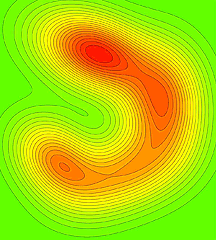We are hiring mutliple technician and postdoctoral positions for a new inititaive in Synthetic Biology and Aging! Please read the full description of the effort here.
The answer to the question, “what makes organisms the way that they are?”, has two components. The first is the mechanistic or proximate answer, which is based on genetics, cell biology, development, neurobiology, and environmental context. The second is the evolutionary or ultimate answer, which is based on natural selection, mutation, genetic drift, migration, and historical contingency. Fully addressing either of these components requires that they both be carefully investigated and integrated with one another. We seek to both understand fundamental underpinnings of biological process and to apply these insights to improve human health and longevity.
To this end, research in the Phillips Lab focuses on understanding the genotype-phenotype map: how genetic information contained within DNA is translated into the whole organism that interacts in the real world. We use the model nematode C. elegans and its relatives to pursue the molecular genetics of this map for traits such as body size, reproductive success, sexual interactions, longevity, and the behavioral response to temperature and chemicals. We also leverage the central role that C. elegans plays in aging research to study the genetics of aging and to discover new compounds that extend lonevity and healthy aging through our participation in the Caenorhabditis Intevention Testing Program (CITP).
The other side to this equation is understanding how the genetic system itself is molded by the evolutionary process. To investigate this, we use experimental evolution and whole genome analysis within laboratory populations of nematodes to identify the genetic basis of the response to selection, and theoretical approaches to study the evolution of gene interaction systems and suites of coevolving traits.
We are also interested in the role that sexual reproduction and outcrossing play in shaping the pattern of genetic variation and influencing the rate of evolutionary change within natural populations. We have been pursuing these questions by looking at the role of males within C. elegans populations, sexual conflict within its outcrossing relatives C. remanei and C. brenneri.
We are dedicated to the proposition that addressing these difficult questions requires not only understanding existing systems, but also in creating new tools and indeed new biology. We do this by developing and integrating approaches from genomic engineering and synthetic biology into most of our work.
A somewhat older overview of research in the Phillips lab.
A talk by Patrick about aging.


